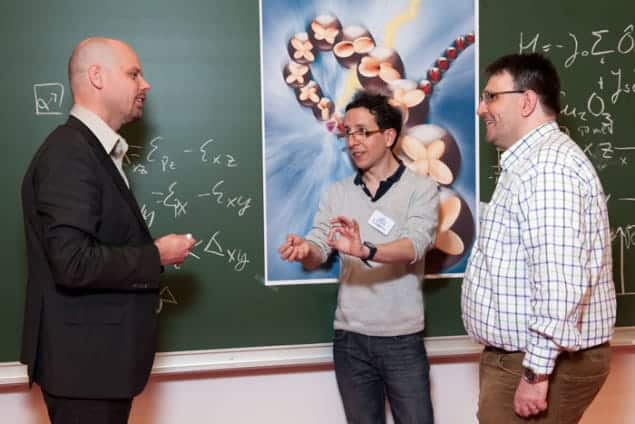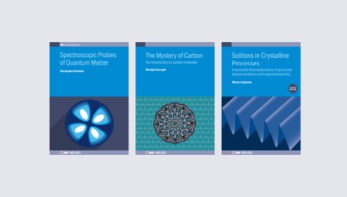
Condensed-matter physicists love quasiparticles, and now they have another entity to admire – the “orbiton”. First predicted a decade ago, the orbiton is a collective excitation of electrons in a 1D solid that behaves just like an electron – with orbital angular momentum but with no spin or electric charge. As well as completing the set of three electron-like quasiparticles predicted to exist in a 1D solid, the discovery, made by an international team of physicists, could offer new insights into the origin of high-temperature superconductivity.
Quasiparticles offer physicists a convenient quantum-mechanical description of the collective behaviour of electrons and atoms in solid materials. Perhaps the most famous example is the “hole”, which describes the absence of electrons in a semiconductor in terms of a positively charged electron-like particle.
Three for one
Sometimes a system can be described in terms of several different quasiparticles, each of which manifests a certain property of the constituent “real” particles. For example, an electron in a solid has intrinsic spin, charge and orbital angular momentum. In some special situations, a system of electrons could be described in terms of three quasiparticles, each having just one of these fundamental properties.
This was illustrated beautifully in the mid-1990s in experiments done on SrCuO2 and Sr2CuO3, in which electrons are confined to 1D along chains in a crystal lattice. The researchers used high-resolution photoemission spectroscopy to remove a single electron from the lattice. In the space left, the researchers observed the formation of quasiparticles representing spin and charge – spinons and holons, respectively – which were seen to travel freely through the crystal lattice.
Surprise sighting
Observing the third quasiparticle – the orbiton, or that representing the electron’s orbital degree of freedom – had been considered too difficult. Now, however, Thorsten Schmitt of the Paul Scherrer Institute at the Swiss Light Source in Villigen and an international group of colleagues have performed the feat using the latest resonant inelastic X-ray scattering technology. This technique provides sufficiently high intensity and resolution to single-out electrons in a 1D solid. “We were very surprised to be able to see it,” says Schmitt.
In their experiment, Schmitt and colleagues used the target material Sr2CuO3, which contains a 1D chain of copper-oxide groups. In these groups, the ground state of the outer electrons line up with alternating spins, but they can become excited to different states via the scattering of an X-ray photon. When an X-ray photon interacts with the sample, an electron switches spin orientations with its neighbour. This creates a domain wall where the alternating spin arrangement is discontinuous. The researchers observed two distinct excitation energies: one relating to this local disturbance of the spin arrangement – the spinon – and the other relating to a collective response of all the electrons in the copper-oxide chain, which is the orbiton.
“What really surprises me is that the [phenomenon] works just like the case of a spin–charge separation,” says Giniyat Khaliullin, a theorist at the Max-Planck Institute for Solid State Research in Stuttgart, Germany. “In fact, the orbital quantum number of an electron corresponds to [the electron’s] spatial shape, and it was widely believed that in real systems the orbitals strongly couple to the lattice and cannot therefore move coherently. It seems that they can, and that they do indeed behave like a real quasiparticle, an orbiton, that carries information about the spatial shape of electrons.”
Schmitt believes that a knowledge of orbiton quasiparticles may help physicists towards the goal of understanding high-temperature superconductivity, which arises mostly in materials that contain copper-oxide. “In high-temperature superconductivity, many of these interactions are very important,” he says. “It is very heavy stuff – for 25 years researchers have been trying to understand high-temperature superconductivity, and they haven’t cracked it. So any detail one finds, even in easier systems, is important to make progress.”
The research is published in Nature.



